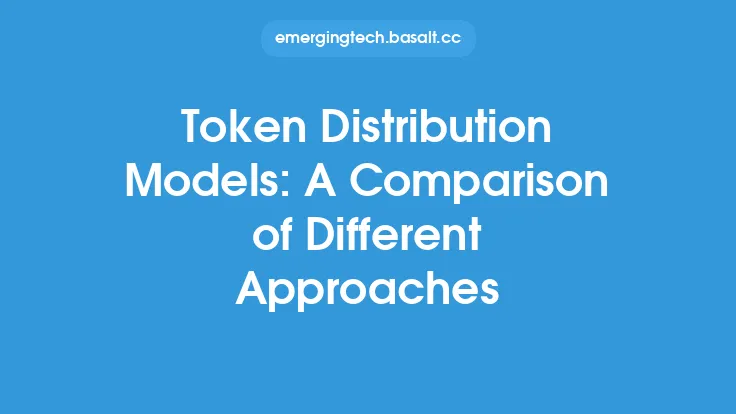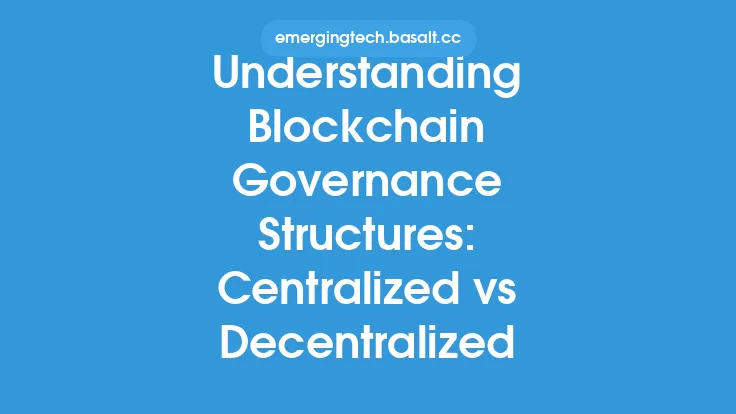The blockchain scalability problem has been a major hurdle in the widespread adoption of blockchain technology. As the number of users and transactions on a blockchain network increases, the network's ability to process and validate transactions in a timely manner becomes a significant challenge. This is because most blockchain networks are designed to prioritize security and decentralization over scalability, resulting in slow transaction processing times and high fees. To address this issue, several blockchain scalability solutions have been proposed and implemented, each with its own strengths and weaknesses.
Introduction to Blockchain Scalability Solutions
Blockchain scalability solutions can be broadly categorized into two types: on-chain and off-chain solutions. On-chain solutions involve modifying the underlying blockchain protocol to increase its capacity to process transactions, while off-chain solutions involve processing transactions outside of the main blockchain network and then settling them on the blockchain. Some of the leading on-chain solutions include sharding, block size increases, and consensus algorithm upgrades, while off-chain solutions include state channels, payment channels, and sidechains.
Comparison of Leading Blockchain Scalability Approaches
Several leading approaches to blockchain scalability have been proposed and implemented, each with its own advantages and disadvantages. For example, Bitcoin's Lightning Network is an off-chain solution that enables fast and cheap transactions by processing them outside of the main blockchain network. Similarly, Ethereum's Raiden Network is another off-chain solution that enables fast and cheap transactions by using payment channels. On the other hand, Ethereum's sharding solution is an on-chain solution that involves dividing the blockchain network into smaller shards, each of which can process transactions independently.
On-Chain Scalability Solutions
On-chain scalability solutions involve modifying the underlying blockchain protocol to increase its capacity to process transactions. Some of the leading on-chain solutions include block size increases, consensus algorithm upgrades, and sharding. Block size increases involve increasing the size of each block on the blockchain, which allows for more transactions to be processed per block. Consensus algorithm upgrades involve modifying the consensus algorithm used by the blockchain network to validate transactions, which can result in faster transaction processing times. Sharding involves dividing the blockchain network into smaller shards, each of which can process transactions independently.
Off-Chain Scalability Solutions
Off-chain scalability solutions involve processing transactions outside of the main blockchain network and then settling them on the blockchain. Some of the leading off-chain solutions include state channels, payment channels, and sidechains. State channels involve processing transactions on a separate network and then settling them on the main blockchain network. Payment channels involve processing transactions on a separate network and then settling them on the main blockchain network, with the added benefit of enabling fast and cheap transactions. Sidechains involve processing transactions on a separate blockchain network and then settling them on the main blockchain network.
Advantages and Disadvantages of Blockchain Scalability Solutions
Each blockchain scalability solution has its own advantages and disadvantages. For example, on-chain solutions offer the advantage of increased security and decentralization, but may result in increased complexity and slower transaction processing times. Off-chain solutions offer the advantage of fast and cheap transactions, but may result in decreased security and decentralization. Additionally, some solutions may require significant modifications to the underlying blockchain protocol, which can be difficult to implement and may result in unintended consequences.
Real-World Applications of Blockchain Scalability Solutions
Blockchain scalability solutions have a wide range of real-world applications, from finance and commerce to supply chain management and social media. For example, blockchain-based payment systems can use off-chain solutions like payment channels to enable fast and cheap transactions, while blockchain-based supply chain management systems can use on-chain solutions like sharding to increase the capacity of the network to process transactions. Additionally, blockchain-based social media platforms can use off-chain solutions like state channels to enable fast and cheap transactions, while also ensuring the security and decentralization of the network.
Future of Blockchain Scalability Solutions
The future of blockchain scalability solutions is likely to involve the continued development and implementation of on-chain and off-chain solutions. As the demand for blockchain technology continues to grow, the need for scalable and efficient solutions will become increasingly important. Additionally, the development of new technologies like quantum computing and artificial intelligence may also play a role in the future of blockchain scalability solutions, as they may enable new and innovative solutions to the scalability problem. Ultimately, the key to widespread adoption of blockchain technology will be the development of scalable and efficient solutions that can meet the needs of a growing user base.





